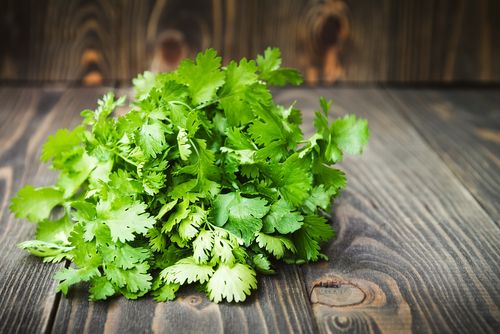Coriander and Cilantro – What’s the Difference?
If you have spent any time experimenting with recipes, you have probably come across coriander and cilantro. For many people, it may seem like there is no difference between coriander and cilantro. They look fairly similar, and they are technically from the same plant. Thus, the question remains: Are coriander and cilantro actually different in any way?
In the United States and the United Kingdom, there are a number of recipes that mix up cilantro and coriander. Non-chefs like there will often make this mistake. The meanings and herb conveyed when someone says either term is not always the same. While people may mix these herbs up quite a bit, they are actually quite different. A dish that is supposed to be made with coriander is going to taste unbelievably different if you toss in cilantro instead. Unless you want your meals to turn out oddly, you have to learn the difference between coriander and cilantro.

How Were Coriander and Cilantro Named?
The Latin plant name for coriander is Coriandrum sativum. This Latin name is the reason why its common name is coriander. Meanwhile, the name “cilantro” actually comes from the Spanish word for this herb. This makes sense since many Spanish and Latin American dishes use cilantro in them. One notable example is salsa, which almost always has cilantro in it.
Origins of the Words Coriander and Cilantro
In the United States and the United Kingdom, we tend to refer to the stalks and leaves of the plant as coriander. While you can use fresh coriander (and this will probably make your recipe taste even better), coriander is generally dried and stored before it is used. If you are using the seeds of the coriander plant, then it is generally called coriander.
In the United States, we tend to call the leaves and stalks of the coriander plant, “cilantro.” The seeds are just called “coriander” without including the word seeds. This basically means that Americans are using the same plant by two different names based on which part of the plant they are using.
Across the world in India, both herbs are referred to by an entirely different name. To make this even more confusing, India calls coriander and cilantro “dhania.” If you see that something is flavored with dhania on your menu, then it is just referring to the stalks, leaves or seeds of the coriander plant.
What Should You Do?
Now that you know that both herb names refer to the same plant, you still have to figure out which option to use. The first step is to look at your recipe. If it is an American recipe, coriander will refer to just the seeds and cilantro refers to the rest of the plant. If the recipe is from the United Kingdom, then coriander refers to the rest of the plant and coriander seeds calls for just the seeds.
If you can’t tell where the recipe is from, its okay. Many recipes will also tell you how to prepare the herb such as cutting the leaves or stalks. If the recipe asks you to cut the herb in any way, it is probably talking about the leaves and stalks. If it asks you to grind coriander up, it is most likely talking about the seeds, but could be referring to either option.
Many people in the United Kingdom do not realize that there is actually an herb called cilantro. Often, the first time you may be exposed to this herb is when you are watching an American cooking show or reading an American recipe book. If you were particularly observant, you may have noticed that the plant in the cooking show looked suspiciously like coriander. You weren’t wrong. They are really the same plant, and your recipe will taste right as long as you use the correct part of the plant.
Get Help Translating Your Recipe
If you are unsure what your cookbook wants you to use, there are a few options. Other than looking at where it was published, you can also look at the measurements used in the recipe. The United Kingdom and the United States use different systems of measurements, so this could indicate where your recipe is from. In addition to translating the herb names, you may also need help translating the measurements. This can easily be done online, although the measurements do not always work out perfectly—for example, you may need 7/8 cup of one ingredient instead of a whole number like 1 cup.
Cooking with coriander seeds, coriander or cilantro can be quite delicious. As long as you figure out where your recipe is from, you can make sure that your finished dish tastes exactly like you wanted to. When in doubt, check the publisher of your book. You can also look for traditional English or American spellings like “favorite” versus “favourite” to figure out where your book is from.